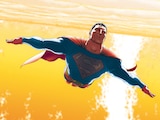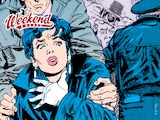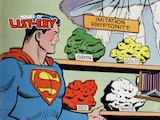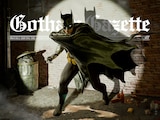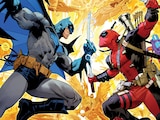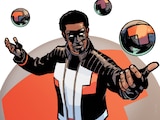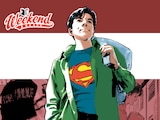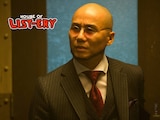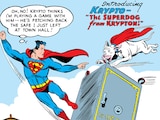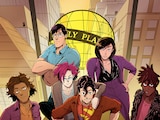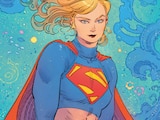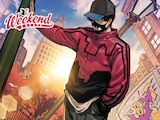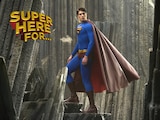Since the months leading up to Dark Crisis in 2022, Joshua Williamson has played a central role in the DC Universe’s story direction. But 25 issues in, Williamson’s Superman might represent his most ambitious, refined work to date. As we head into the Summer of Superman, we thought it was well past time to check in with Josh on what’s ahead for the Man of Steel. We also got his thoughts on what Superman means in the current climate, the super-villain reform program, and finding missed opportunities in the landmark All-Star Superman.
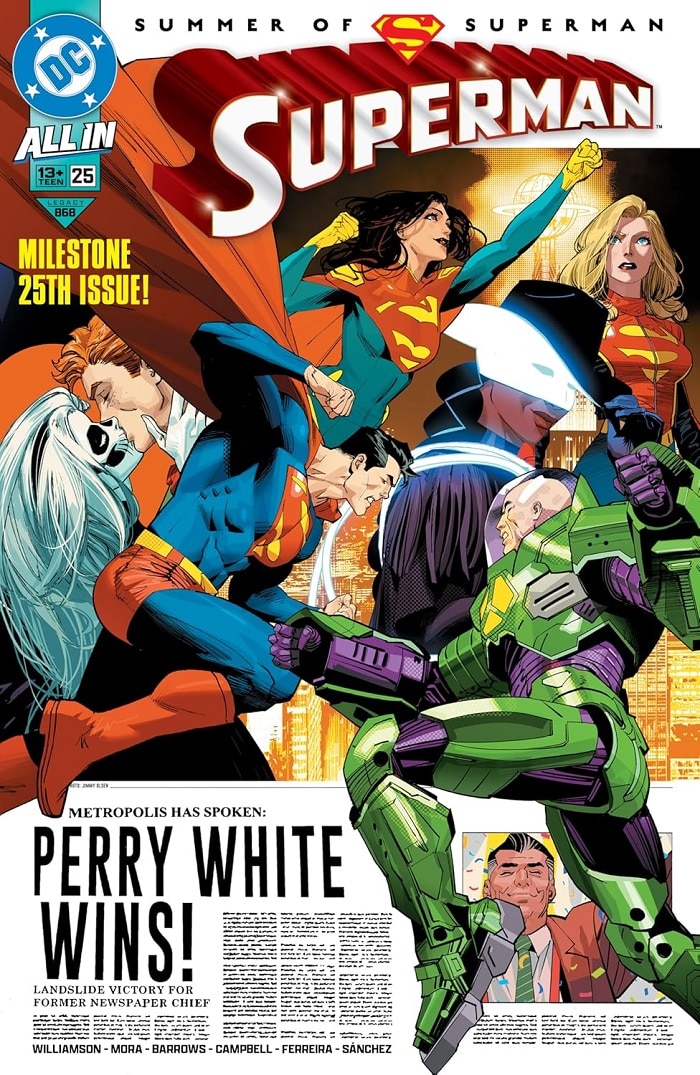
DC’s publishing line right now is split between the Absolute titles and the All In initiative. It’s been said that the spirit of the Absolute universe is Darkseid, and the spirit of our main comic universe is Superman. As the Superman writer, what does that mean to you?
I have my cop-out answer, which is to read Superman #28 when it comes out in July. That’s when we really start to get into that concept. But I think to me, with Darkseid, everything is about ending. Everything is about the Omega. It’s about controlling things. You have to look at Darkseid first, I guess, to look at how Darkseid is and how so much is about controlling the end of stories.
I feel like Superman is about beginnings, and the beginnings of stories. It’s not just about hope. It’s not just about looking at the best in people. It is about Superman being the beginning of all these things, and the beginning of the greatness of DC. That’s how we link the two of them, as the alpha and the omega of what we’re doing.
One thing that I keep seeing in your Superman are these heroic turns for basically all the A-Listers in his rogues gallery. We’ve seen these redemption arcs for Metallo, Parasite, Livewire and Silver Banshee. Even, to a certain extent, Lex Luthor. What is the statement you’ve been building here?
It’s sort of what Superman says in the first issue. There’s a scene where Clark and Lois are talking, and they talk about second chances. Life can be long, and everyone deserves a chance at redemption if they want it. There’s a part where he talks about Lex, and he says, “Lex is the only person I ever let down.” Superman looks at people, and he really believes in the best in everybody. So, what does that mean about his villains?
So much of the book is about taking everything that was Superman and moving it a step. So, it was about Lois becoming Editor-in-Chief. Perry becoming Mayor. Jimmy having a nice relationship. Everybody’s taking a step forward, but I also had to look at that with the villains. And somebody like Lobo, who is normally one way, had suddenly become this family man, in a weird way, because of Crush. So I was like, “We already got him moving, we’ve got to move that another step.”
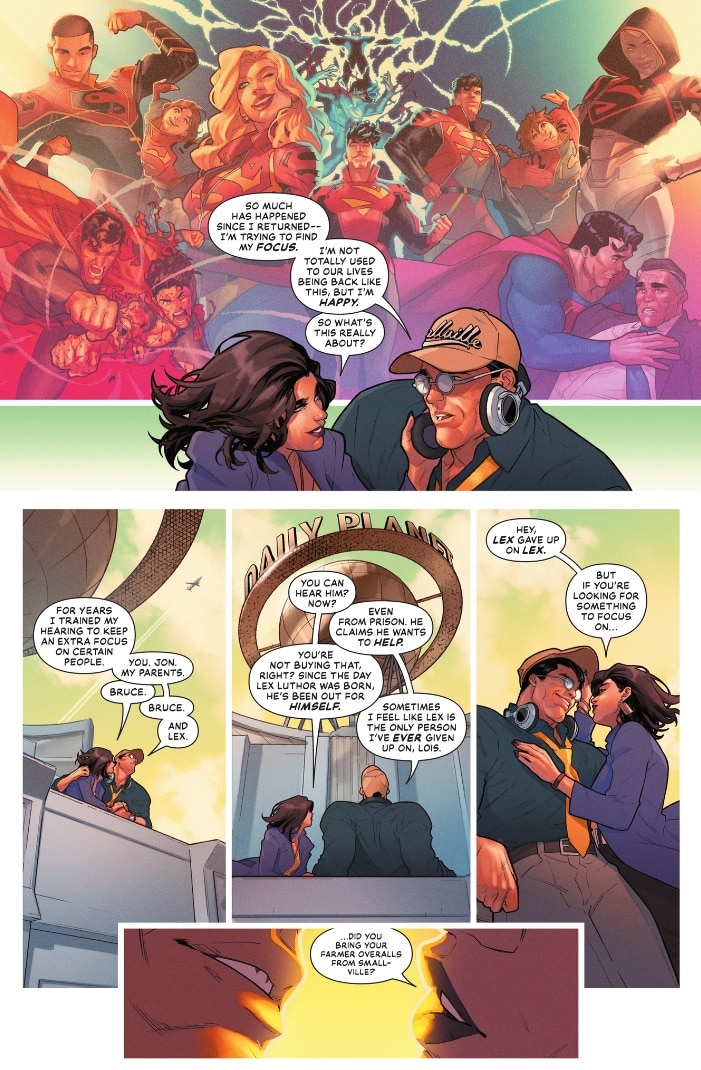
You take Lex, and you move him one step. Like, what if Lex was sincere? What if he really meant it this time? With Parasite, all he wants is some food. Somebody gives him food, what happens next? Livewire wants a voice. She wants to be heard. Okay, so Lois gives her the column. She’s going to be heard.
So, how do you move these characters a step? By giving them what they’ve been saying they want this whole time. The theme of the book is that second chance at redemption and what those characters do with it. Not all of them are going to do something good with it and not all of them are going to last. You’ll see as we go. I always like to say it’s a roller coaster.
I don’t know if this is off base, but your take on Luthor feels very inspired by Michael Rosenbaum’s Lex Luthor in Smallville, and the relationship he had with Clark.
I did watch a lot of Smallville [laughs]. I like him as Lex.
You’re doing a lot to address the classic Superman characters. But you’ve created a couple new ones as well, my personal favorite being Marilyn Moonlight. I’d like to know where she came from, and what you had in mind for her.
When I looked at Superman, I said one of my jobs here is to do genres. I really wanted to do a horror story. I do want to do sci-fi stories, but we’ve seen so much of that already. I want to look at this from a different lens, and one of these different genre lenses was western. I had this subplot I wanted to build about westerns, so I need a western character.
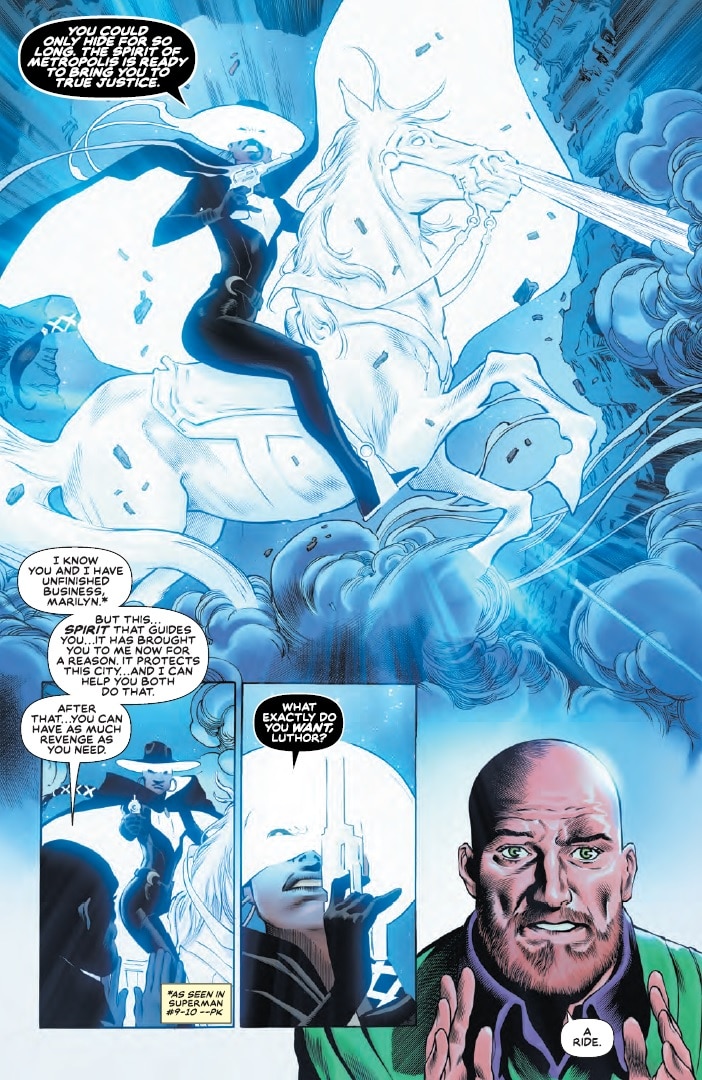
I also wanted to do some new characters. So, I went to Jamal [Campbell] and we talked about the characters of the book, the themes of the book. I said I really want to do this western character. I like this phrase that “Metropolis is haunted.” There’s a ghost of Metropolis, a spirit of Metropolis. That would make sense for a western character—even though Metropolis is not in the west, to be clear. But it’s early, early years of Metropolis’ character.
So, we were going back and forth, and Jamal was like, “I have it. I think I have the visual down.” A few days later, Jamal was like, “Here’s where I’m at.” And Jamal had a series of designs. We ended up picking the two of them that we thought worked best, and we started talking about her character and her voice. But that was really her development. It was all from that. And she will be in other stuff, at some point. That’s the real fun part of these characters.
To me, the introduction of Marilyn Moonlight ties very much into the stuff we were seeing when Black Lightning first showed up in Metropolis. That there’s a whole side of the city of these underprivileged communities that Superman himself hasn’t been seeing.
We never got to do this, but I always thought about Metropolis as being a city where everybody looks up all the time. There needs to be characters who are paying attention to the streets. That’s why Marilyn can’t fly. That’s why she rides a horse. That was part of my motivation—I want there to be characters that are protecting Metropolis when Superman isn’t there. The funny thing is that since I’ve had these thoughts, so many characters live in Metropolis now [laughs]. I think Metropolis is pretty much covered at this point. If Superman flies away for a day, the city is going to be fine, which is also something we’re going to explore at some point. I have a story for next year that’ll explore that.

You’ve had the privilege to work with some of the greatest artists working in comics today, between Jamal Campbell and Dan Mora. How do your dynamics working on the book differ depending on which artists you’re working with?
I’ve been really lucky to work with these great artists. With Jamal Campbell, I went a little more romantic in general. I went a little more personal and grounded. A bit more Clark and Lois than Superman and Superwoman. But when you get to Dan Mora, he can draw everything incredibly well. With Dan it’s like, “What crazy thing can I throw at Dan, and then see him knock it out of the park every time?” That’s part of the motivation in issue #21. Dan Mora drawing Amethyst? I don’t think I’ve seen that before, let’s do it. Let’s do this Lord of the Rings-style battle in Gemworld.
With each artist, it depends a little bit on tone. They’re all so good. They’re all amazing.
I want to talk about Superwoman. This entire Lois Lane story has, to me, felt like an exploration of Grant Morrison’s All-Star Superman issue where Lois gets Superman powers for 24 hours. How much of that did you have in mind?
The first time this came up was four or five years ago talking about the plans for Superman post-Dark Crisis. We were talking about what we were going to do, and Tom Taylor was actually the one who said, “What if we gave her powers?” And I was like, “I don’t think we could do that now.” But what’s funny is we already knew we were building to Absolute Power. We kind of knew a bit of the plot, that everyone was going to lose their powers, and at the end, they’d come back, but some of them would get mixed and matched. So, that was part of the conversation.
I read All-Star again in this process and one thing I noticed in that story is as much as it’s a Lois story from her POV, Lois doesn’t actually use her powers much. It’s a great issue, I love it. But a big bulk of that issue is Samson, Atlas and Superman fighting over Lois.
One of the best parts of superheroes, I believe, is the fun and games of getting powers and trying them out. Everybody loves it. When you do origin stories, the first time you see Clark fly, the first time Spider-Man uses his web-spinners, that stuff is always the best part of superheroes. The realization and the joy that comes from it. That was something I really wanted to do for Lois. Lois has been around people with powers basically her whole adult life, but it’s one thing to be around powers, it’s another to have them.
The moment you get powers, you start realizing the responsibility of powers. That was something I wanted Lois to go through. I really wanted to explore that, and it allowed us to devote more time to her learning what it means to have powers.

I promised the DC Official Discord that I’d let them ask one question of you. They want to know what’s going on with the Super Twins, Otho and Osul Ra, who have been absent from your run so far.
So, I have a rule. I will not comment on somebody else’s book. If you are really paying attention to Superman stuff, what I will say is that is a story that Phillip [Kennedy Johnson] started in Action, and Phillip has a book coming, and you should read Phillip’s book.
Perfect answer.
I love the kids. I love all the supporting cast characters. A lot of them are in other books right now. Jon is in Secret Six. Kon is in Green Lantern. The characters are going to be in different places. I would just say to please read Phillip’s Adventures of Superman when it comes out. I can’t talk about it too much, because I don’t want to spoil somebody else’s comic.
You famously wrote The Flash for 100 issues. We’re a quarter of that way into Superman…think you can do it again?
Could I do it again? Maybe. It really depends on where the story goes. I have a lot of ideas for Superman. You’re going to see a lot of bonkers stuff we do in the book this year…and next year, I think, is really going to surprise people. I’m not looking at a number. I just know I want to tell the stories I want to tell.
Superman #25 by Joshua Williamson, Jamal Campbell, Eddy Barrows, Eber Ferreira, Dan Mora and Alejandro Sánchez is now available in print and as a digital comic book.

